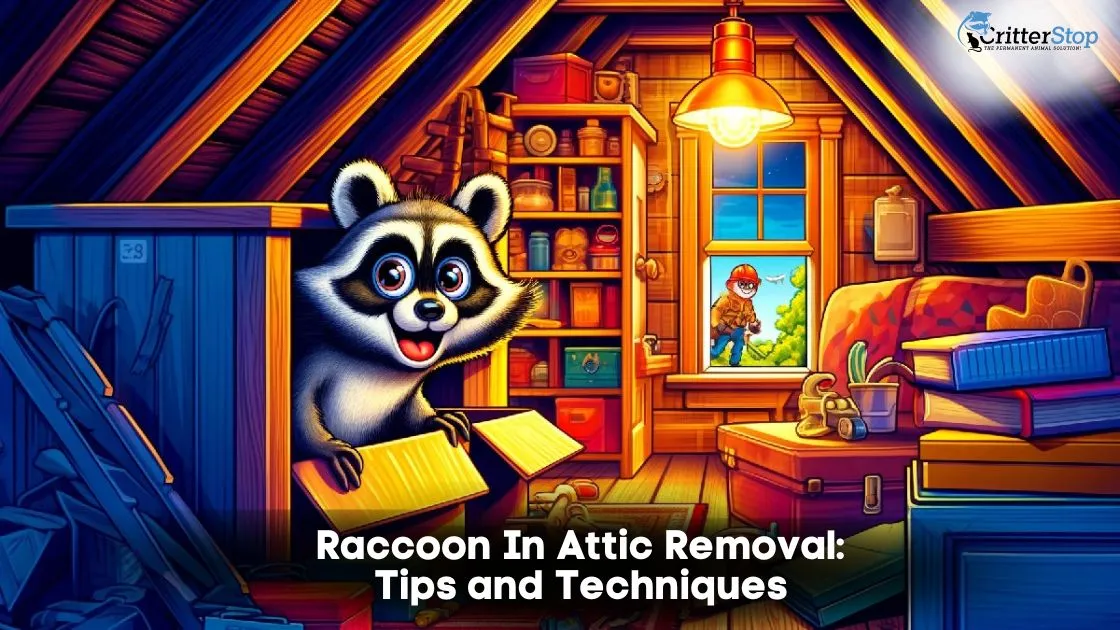
Raccoons are cute and cuddly creatures, but they can cause significant damage to your home if they get into your attic. These little critters are excellent climbers and can easily access your attic using any small openings or gaps in your roof.
Once they get inside, they can damage your attic insulation, electrical wiring, and other parts of your home. Combined with the health risks they pose, proper raccoon in attic removal becomes pressing and urgent.
Raccoon in attic removal can be challenging and dangerous. Raccoons can be aggressive when cornered and carry diseases that harm humans. That's why it's necessary to seek the help of a professional wildlife removal company to handle the task.
A professional wildlife removal company, such as Critter Stop, has the expertise, equipment, and experience to safely and effectively remove raccoons from your attic. They can also help you take steps to prevent future infestations.
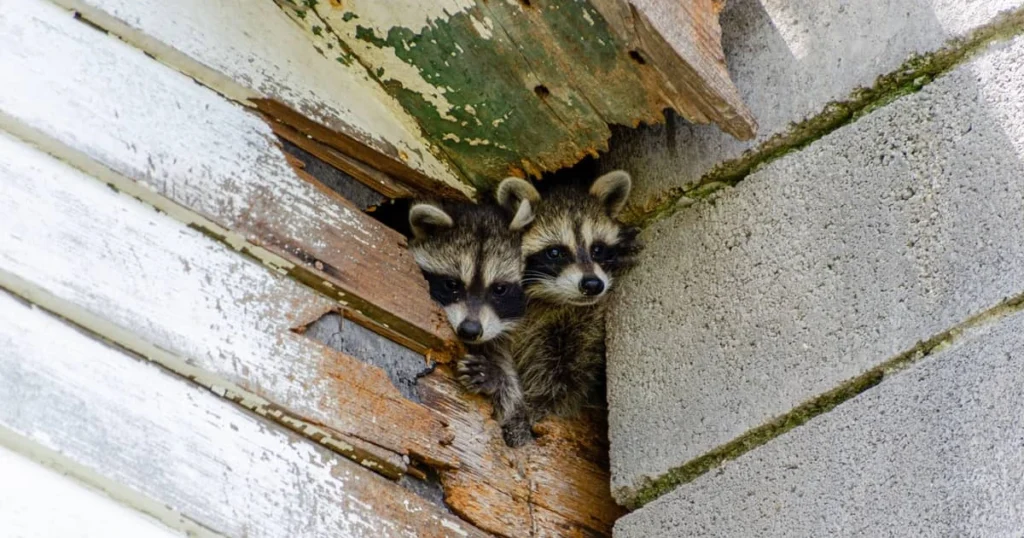
Raccoons are incredibly intelligent and resourceful. They are also known for their ability to adapt to different environments, including urban areas. Raccoons are usually nocturnal animals, being most active at night unless they are sick. They are omnivores, meaning they eat plants and smaller animals. In urban areas, raccoons frequently scavenge for food in garbage cans and dumpsters.
You get attic raccoons for a variety of reasons. One reason is to find a warm and dry place to nest, which provides a safe and secure environment for raccoons to raise their young. Another reason is to find food. Raccoons may enter attics searching for insects, rodents, or other small animals to eat. Finally, raccoons may enter attics simply because they are curious and like to explore new environments.
Several signs may indicate a raccoon infestation in your attic. One sign is the presence of raccoon droppings, which are usually cylindrical in shape and may be up to two inches in length. Another sign is the presence of urine stains, which have a strong odor and may leave stains on surfaces. You may also hear scratching, thumping, or other noises in your attic, which may indicate the presence of raccoons.
If you think you may have a raccoon infestation in your attic, you must contact a professional raccoon removal service. Trying to remove raccoons on your own without proper training is dangerous and may result in injury or property damage. A professional raccoon removal service will have the knowledge, equipment, and professional training necessary to safely and humanely remove raccoons from your attic.

Raccoons can carry several diseases that can be transmitted to humans and pets. These diseases are frequently contracted via contact with raccoon feces, urine, or saliva. One of the most well-known diseases associated with raccoons is rabies, which is a viral infection that affects the central nervous system and is often fatal if it's not promptly treated. Other diseases that raccoons can transmit include leptospirosis, salmonella, and roundworm.
As briefly mentioned, raccoons pose health risks and can cause costly damage to a home’s structure. They can chew through electrical wiring, insulation, and drywall. They can also tear up roofing materials and damage attic vents and screens.
This damage can lead to costly repairs, compromising the structural integrity and safety of the home. In addition, raccoons can create entry points for other pests, such as rodents and insects, to enter the home.
It is important to address raccoon infestations as soon as possible to minimize the risks of disease transmission and structural damage. Professional raccoon in attic removal services can safely and effectively remove raccoons from home and prevent future infestations.
When removing raccoons from attics, it's important to consider the state and local laws regarding wildlife in the area. These laws vary by state and even by city, so it's important to do research and ensure you have the necessary permits and licenses before attempting to remove raccoons.
In Texas, it’s illegal to relocate or trap raccoons without a permit. Additionally, some states have specific regulations for humane trapping and relocation of wildlife. If you plan to set a raccoon trap, it's important to check all of your local and state laws to avoid legal consequences and ensure that the raccoons are treated humanely.
Humane removal practices should also be considered when removing raccoons from attics. We should never aim to harm the raccoons or cause them any unnecessary stress.
One option is to use a one-way door system, which allows raccoons to leave the attic but prevents them from re-entering. Another option is to use live traps, but it's important to check any traps you set frequently so the raccoon is not left in them for an extended period of time.
It’s important to consider the safety of the raccoons and the people involved in the removal process. Protective gear should be worn to avoid bites and scratches, and the raccoons should be handled carefully to avoid injury.
Overall, it's important to approach raccoon removal from attics with a legal and ethical mindset. By following wildlife laws and using humane removal practices, individuals can safely and effectively remove raccoons from attics while still protecting the animals' well-being.
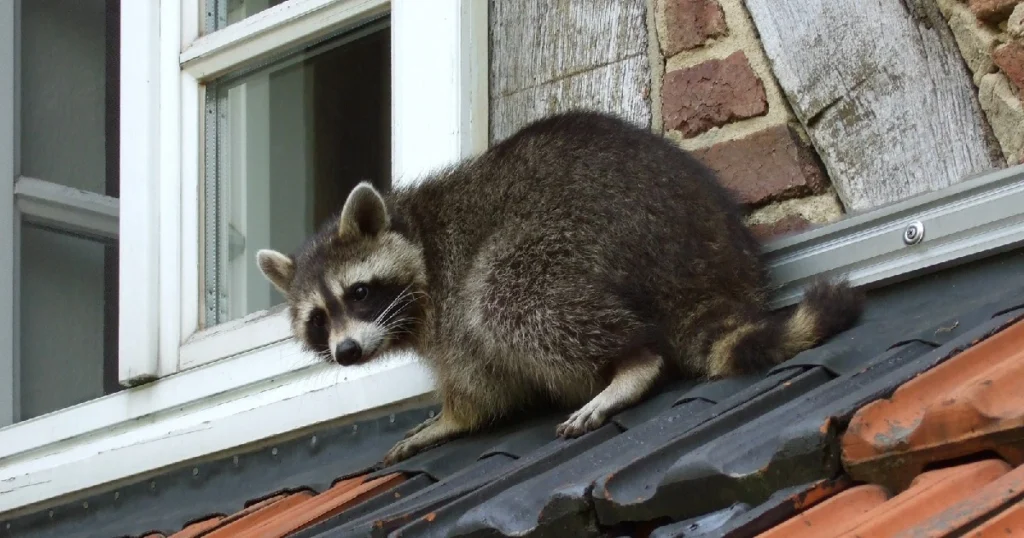
Preventing raccoons from entering the attic is the recommended way to avoid the need for raccoon removal. There are several effective strategies that homeowners can use to prevent raccoons from entering their attics.
The first step in preventing raccoons from entering the attic is to secure all entry points. Raccoons are incredible climbers and can easily climb trees and jump onto roofs. Homeowners should inspect their roofs and attics for any holes or gaps that may allow raccoons to enter. All holes and gaps should be sealed with metal flashing, wired mesh, or similar durable materials.
Another effective way to prevent raccoons from entering the attic is to use environmental deterrents. Homeowners can use motion-activated sprinklers, bright lights, or loud noises to scare away raccoons. Additionally, planting thorny bushes or installing prickly fences around the perimeter of the property can also deter raccoons from entering.
It is important to note that prevention strategies should be implemented before any signs of raccoon activity are detected. Once raccoons have entered the attic, removal is necessary to prevent damage to the property. Therefore, homeowners should regularly inspect their roofs and attics for any signs of raccoon activity and implement prevention strategies as needed.
By implementing these prevention strategies, homeowners can effectively prevent raccoons from entering their attics and avoid needing raccoon removal.

Before attempting to remove raccoons from your attic, it’s important to take proper safety precautions. If they feel threatened, raccoons can be aggressive and may attack. Wearing protective gear is a must, such as gloves and long sleeves, to avoid any potential bites or scratches. In addition, you must wear a mask to avoid inhaling harmful particles from raccoon droppings.
There are a few remedies that are pretty effective in removing raccoons from your attic. One popular method is to use a bright light or loud noise to scare the raccoons away. This can be achieved by placing a radio or bright light in the attic for a few days. The raccoons will eventually become scared and leave the area.
Another effective method is to use a humane trap. These traps can be bought online or at most hardware stores and are designed to trap the raccoon without harming it. Once the raccoon is caught, it can be released back into the wild.
It’s important to note that these DIY removal techniques may not always be successful and can be dangerous if not done properly. If you are unsure about how to remove raccoons from your attic safely, it’s best to contact a professional wildlife removal service, as they have the expertise and the equipment to safely and effectively remove raccoons from your home.
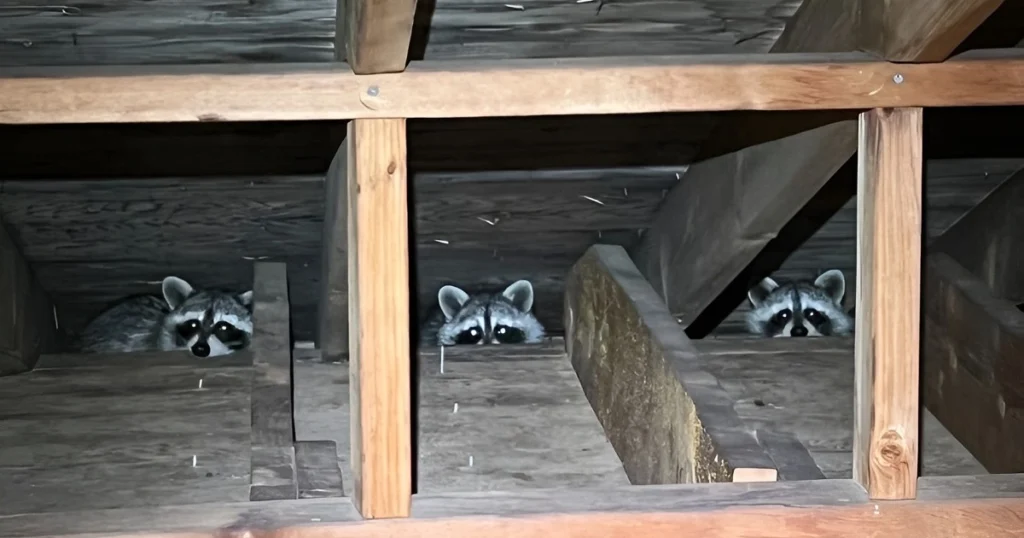
When faced with a raccoon family in your attic, it’s important to choose an experienced professional - especially if you want a permanent solution. Nobody wants raccoons living in their attic every time they are looking for a safe place to give birth and nurture their babies.
Look for a licensed and insured wildlife removal company with experience in raccoon removal. With the risk of re-entry, most customers find it important to choose a company that offers a warranty on their work, protecting them if raccoons do not return.
While the "exclusion" work needed to seal a home may seem doable at first glance, it's important to be knowledgeable about the animals you are dealing with and other factors influencing your specific situation. For example, the presence of a mother raccoon and her baby raccoons drastically impacts the game plan for safe and humane removal.
Before hiring someone, you should always consult for an estimate of the cost of the removal process. The cost of raccoon removal from an attic is different depending on the severity of the infestation and the property’s location.
The removal process for raccoons in the attic typically involves a few key steps. First, the professional will perform a thorough inspection of the property to assess the extent of the infestation and determine the proper course of action.
Once the removal plan has been established, the professional will set traps in the attic to capture the raccoons. It is important to note that the use of poison is often illegal, and it's not recommended since it can harm other animals and may not effectively remove the raccoons.
After the raccoons have been captured, the professional will seal off any entry points to prevent future infestations. This may involve repairing holes in the roof or walls and installing barriers to prevent the raccoons from re-entering the attic.
Overall, removing a raccoon from the attic can be complex and potentially dangerous. To ensure a safe and effective removal, it's important to choose a qualified professional with experience in raccoon removal.
Raccoon eviction fluid is a substance that mimics the scent of a dominant male raccoon. When applied in areas where raccoons are present, it can effectively deter them from staying or nesting in that location. Here's how it works:
It's important to note that while raccoon eviction fluid can effectively deter raccoons, it may not work in all situations, especially if the raccoons have already established a strong presence or if there are other attractants in the area. In some cases, it may need to be used in conjunction with other deterrent methods or as part of a broader wildlife management plan.
Raccoon eviction fluid is usually only advisable in situations where a mother raccoon has baby raccoons. It’s best for the mother raccoon to relocate the baby raccoons by herself. Mother raccoons are very protective, so they are quick to relocate their young when they think they are in danger. Otherwise, the wildlife or pest control expert may have to damage the inside of your home in order to reach the babies.
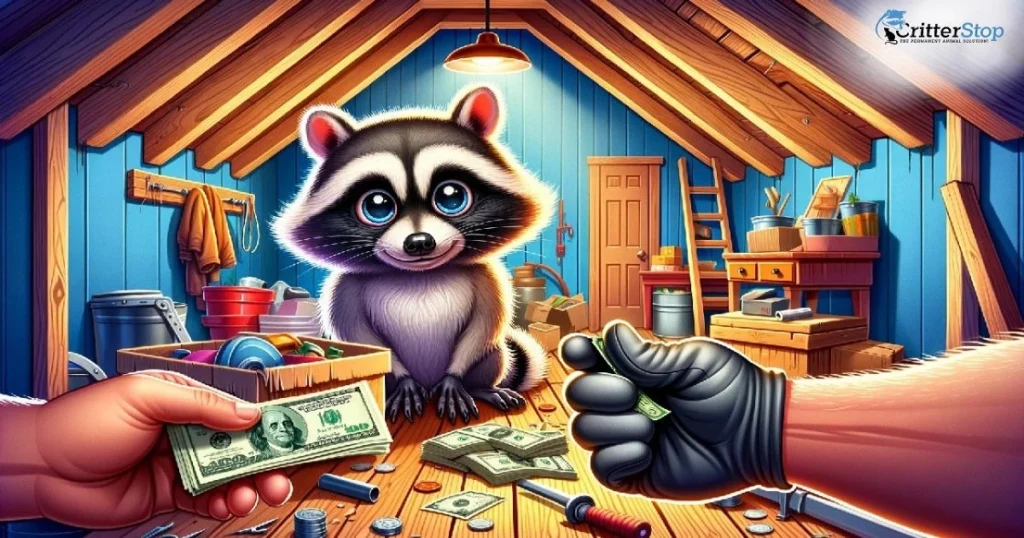
The expense associated with extracting raccoons from an attic can fluctuate based on multiple variables, such as the extent of the infestation, the degree of damage inflicted, and the property's geographical position. Additionally, the price may differ according to the removal technique employed. For instance, capturing and relocating raccoons might cost more than employing exclusion techniques.
Another factor that can influence the cost to get rid of raccoons is the time of year. During the breeding season, which usually occurs between January and June, raccoons are more active and may be more difficult to remove. As a result, the cost of removal during this time may be higher.
Homeowners' insurance may cover the cost of raccoon removal if the damage caused by the infestation is considered to be a covered peril. However, insurance policies can vary, and not all policies cover wildlife damage. If you opted for a more premium offering, it may be worth checking with your insurance provider to determine if your policy covers raccoon removal, but in our experience, it's very rare.
Even if your insurance policy covers raccoon removal, there may be limits to the coverage provided. In some cases, the cost of removal may exceed the coverage provided by the policy. In these situations, homeowners may need to pay for some or all of the cost of removal out of pocket.
Overall, the cost of removing raccoons from an attic can vary depending on several factors. Homeowners should consider these factors when determining the best method for removal and whether or not to file an insurance claim.
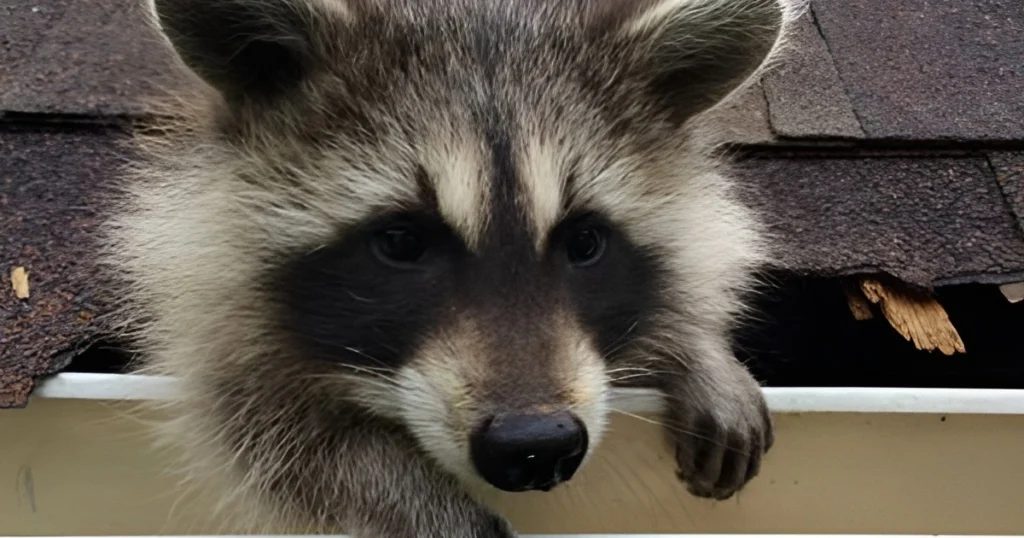
After successfully removing raccoons from the attic, it's important to conduct a thorough cleanup and repair of any damage caused by the animals. This ensures both the safety and health of the occupants but also prevents future infestations.
Raccoons can carry a variety of diseases and parasites, such as roundworms and fleas, which can be harmful to humans and pets. Therefore, it's crucial to decontaminate the attic after removal. This involves removing all feces, urine, and nesting materials and disinfecting the area with appropriate chemicals.
Protective gear, such as gloves and masks, should be worn during the decontamination process. In severe cases, a professional cleaning service is often necessary to provide adequate disinfection.
Raccoons can cause significant damage to the attic, including chewing through wires, insulation, and structural components. Repairing these damages is important to prevent further problems, such as fire hazards and water leaks.
Firstly, all entry points used by the raccoons should be sealed to prevent re-entry. This includes repairing holes in the roof, vents, and walls. Secondly, damaged insulation should be removed and replaced. Lastly, any chewed wires or structural components should be repaired or replaced by a qualified professional.
Post-removal cleanup and repair are essential steps to ensure the safety and health of the occupants and prevent future infestations. By following these steps, homeowners can effectively eliminate raccoons from their attics and restore the integrity of their homes.
In conclusion, if you have raccoons in your attic and need raccoon control, give Critter Stop a call at (214) 234-2616 or otherwise contact us. We can provide quick and reliable raccoon removal from your attic. While our footprint is always expanding, even if we are not currently in your area, we can often help refer customers to a trusted brand in their area.
There are various ways to address a raccoon problem in your attic, such as using bright lights, loud noises, or strong odors. However, these methods are often unsuccessful. And if they are, it's likely only temporary. If you have raccoons in your attic once, it's very likely that more raccoons will come back again unless they are physically sealed out of the structure.
Yes. Raccoons can most definitely carry rabies. Though they may be more comfortable around humans than other local wildlife, they are still wild animals and do not have the shots that pets often do. While most homeowners expect to only see a rabid raccoon out during the day, they are also active at night. In fact, they may be more likely to come to your attention since rabid raccoons are less sneaky and quiet than most raccoons. They may knock over trash cans or even find their way into a trash can and cannot escape.
Most professional wildlife removal experts—and especially Critter Stop—can help you control raccoons in an attic or crawl space. The exclusion and trapping process is very similar.
The cost of professional raccoon removal from an attic can vary depending on the severity of the infestation and the location of the property. Most jobs are at least $1,000, with the price increasing the scope of work and permanence of the solution.
Humane eviction fluids are available on the market that can be used to repel raccoons from your attic. These fluids are made with natural ingredients and are designed to make the attic environment uncomfortable for raccoons, encouraging them to leave.
Having raccoons in your attic can pose several risks, such as damaging insulation, chewing on electrical wires, and leaving behind feces that can spread diseases. It is important to remove raccoons from your attic as quickly as possible to avoid damage and health hazards.
Some signs that raccoons have left the attic during daylight hours include the absence of noises and activity, no visible signs of damage or disturbance, and no sightings of raccoons in or around the property.
The most effective methods for quickly removing raccoons from an attic include using live traps, one-way doors, and exclusion techniques. It is important to hire a professional to get rid of raccoons to ensure the safety of both the homeowner and the raccoon.
The cost of removing raccoons from an attic can vary depending on the severity of the infestation and the location of the property. On average, the cost can range from $300 to $1,500. It is important to hire a professional to handle raccoon removal to ensure the safety of both the homeowner and the raccoon.
Visit our Critter Library and learn more about our furry friends